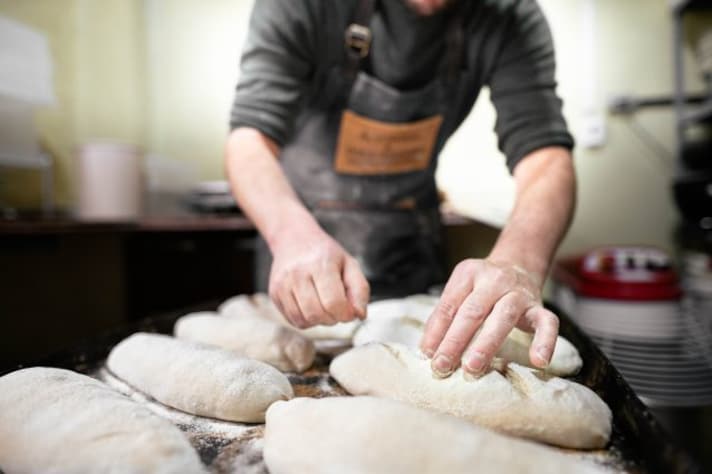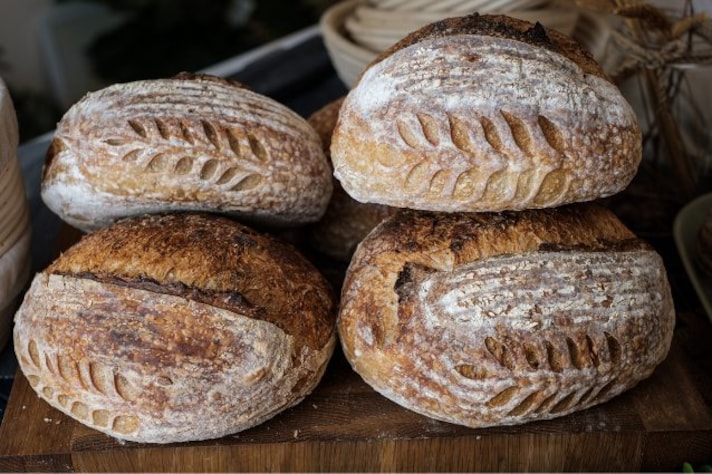How to Score Bread Dough: 3 Techniques to Make You a Pro!
Scoring bread dough before baking controls its expansion and improves appearance. Use a knife, scissors, or a lame for quick, shallow cuts. Common patterns include single slashes, crosses, wheat stalks, and intricate designs. Mastering scoring turns bread into both a culinary and visual art, enhancing texture and crust development.

Baking bread at home brings a sense of warmth and accomplishment, filling your kitchen with an aroma that feels like a hug. Among the crucial steps in the bread-baking process, one that must not be overlooked is scoring the dough just before it goes into the oven. This technique, while seemingly simple, transcends into an art form among professional bakers, turning a humble loaf into a canvas for creative expression.
Why Score Bread Dough?
Scoring dough involves making shallow cuts on its surface right before baking. This isn't merely for aesthetic appeal; it serves a functional purpose by controlling the direction in which the bread expands during baking. Without scoring, bread can crack in unexpected places, leading to an uneven shape. Proper scoring allows the bread to expand in a controlled manner, creating a beautiful and professional-looking loaf that not only looks better but also improves texture and crust development.
How to Score Bread Dough with a Knife
A sharp kitchen knife can be used for scoring, although it may not be as effective as a baker's lame (a razor blade on a stick, designed specifically for scoring). To score with a knife, hold the blade at a 30-degree angle to the dough's surface and make quick, decisive cuts. The key is to make the incisions swift and shallow—about a quarter-inch deep. This method works well for simpler, straight-line patterns.

How to Score Bread Dough with Scissors
Using scissors offers a unique way to score bread, especially for creating patterns that stand up from the loaf, like spikes or layers. To score with scissors, snip into the dough at a shallow angle, almost parallel to the dough's surface. You can make multiple snips around the dough to create a flower or starburst effect. This method is particularly useful for softer, more delicate doughs.
How to Score Bread Dough Without a Lame
If you don't have a baker's lame or find it intimidating, you can still achieve effective scoring with household items like a sharp, thin-bladed knife or even a razor blade. Ensure the blade is very sharp to avoid dragging or tearing the dough. Flouring the blade slightly or dipping it in water can help it glide through the dough more smoothly. The technique remains the same: swift, shallow cuts.

Common Patterns to Score Bread Dough
The possibilities for scoring patterns are nearly endless, ranging from simple slashes to intricate designs. Some of the most common patterns include:
- Single Slash: A simple, long cut that allows for ample oven spring. It's ideal for batards and baguettes.
- Cross: A cross-shaped cut that creates four distinct quadrants, suitable for round loaves.
- Wheat Stalk: A series of overlapping curved lines that resemble a wheat stalk. This is a beautiful option for rustic loaves.
- Checkerboard: A series of perpendicular lines creating a checkerboard effect, which is both decorative and functional.
- Leaves and Flowers: More intricate designs that require a steady hand and a bit of practice but result in stunningly beautiful loaves.
;Resize,width=767;)



